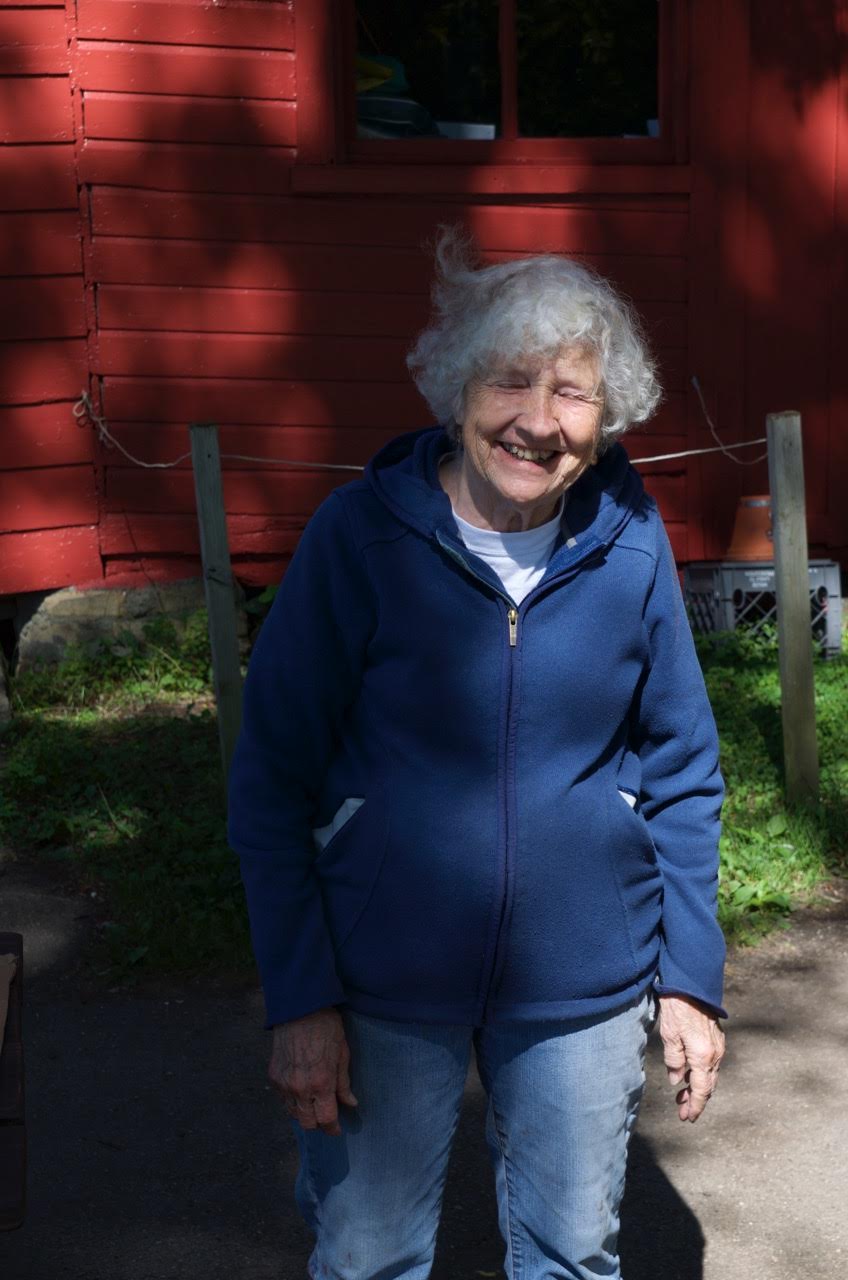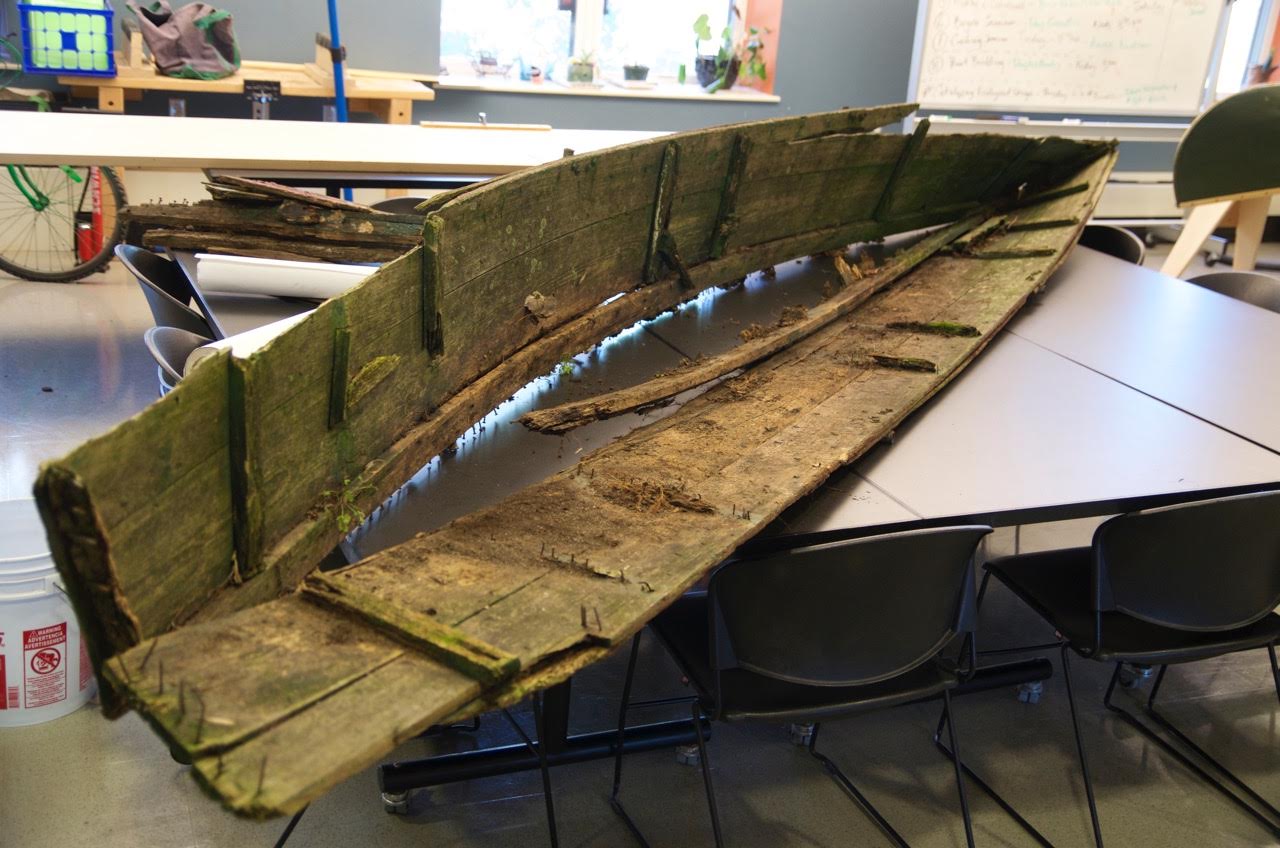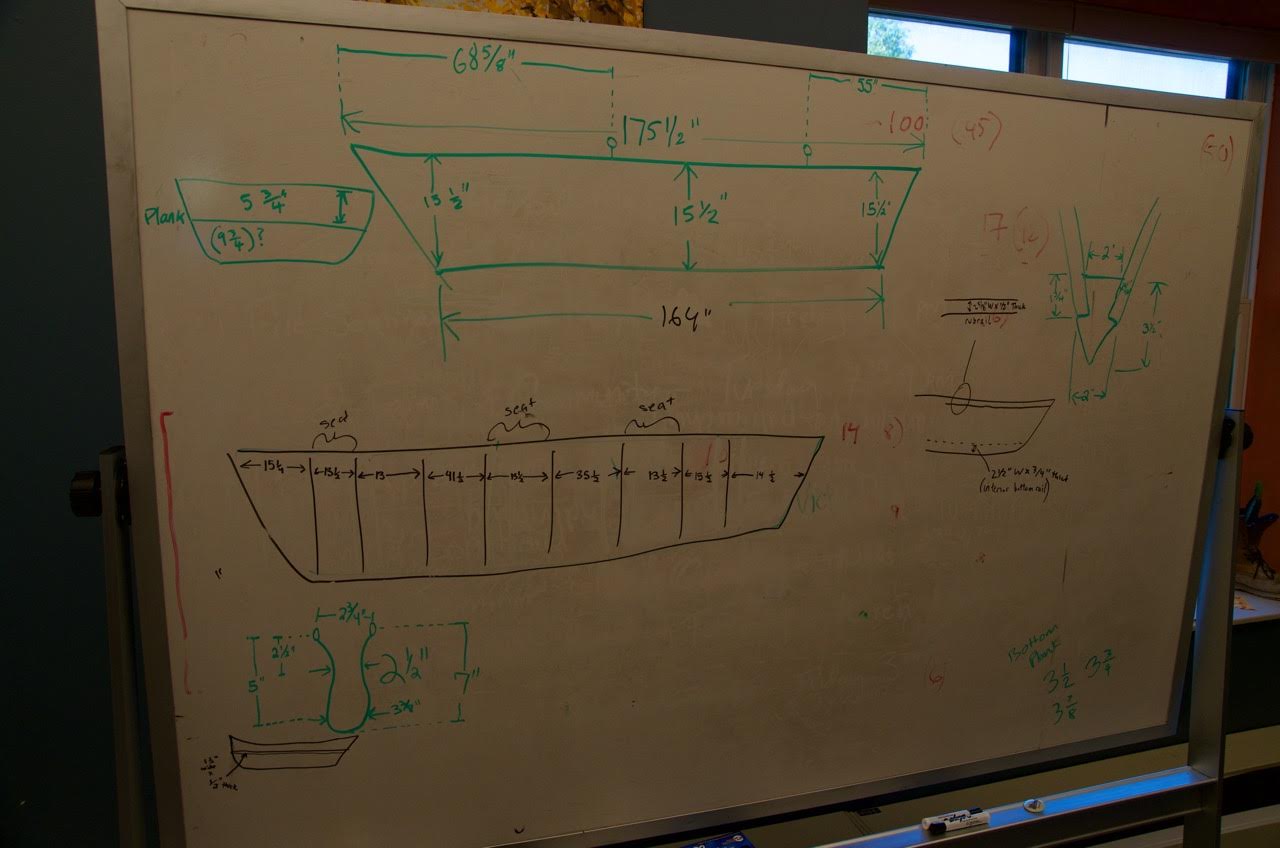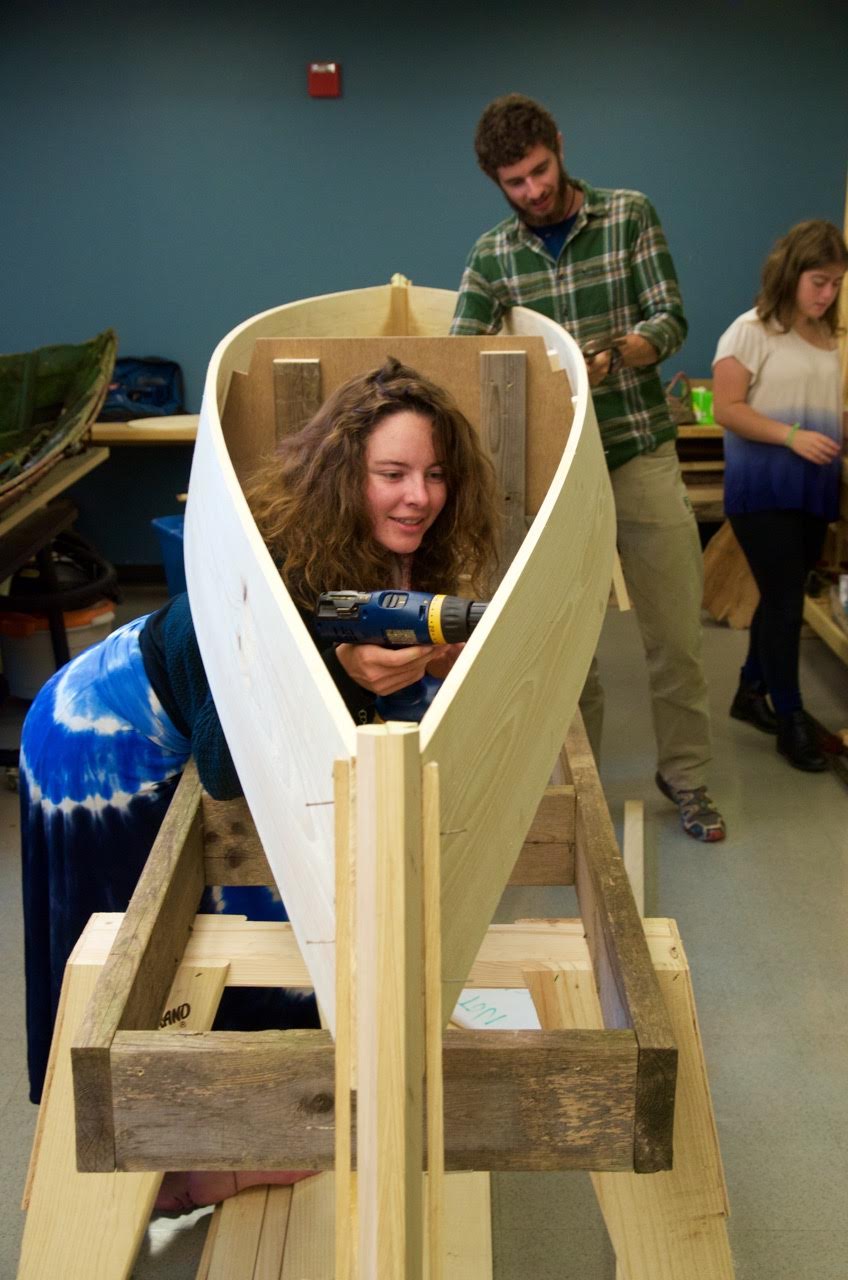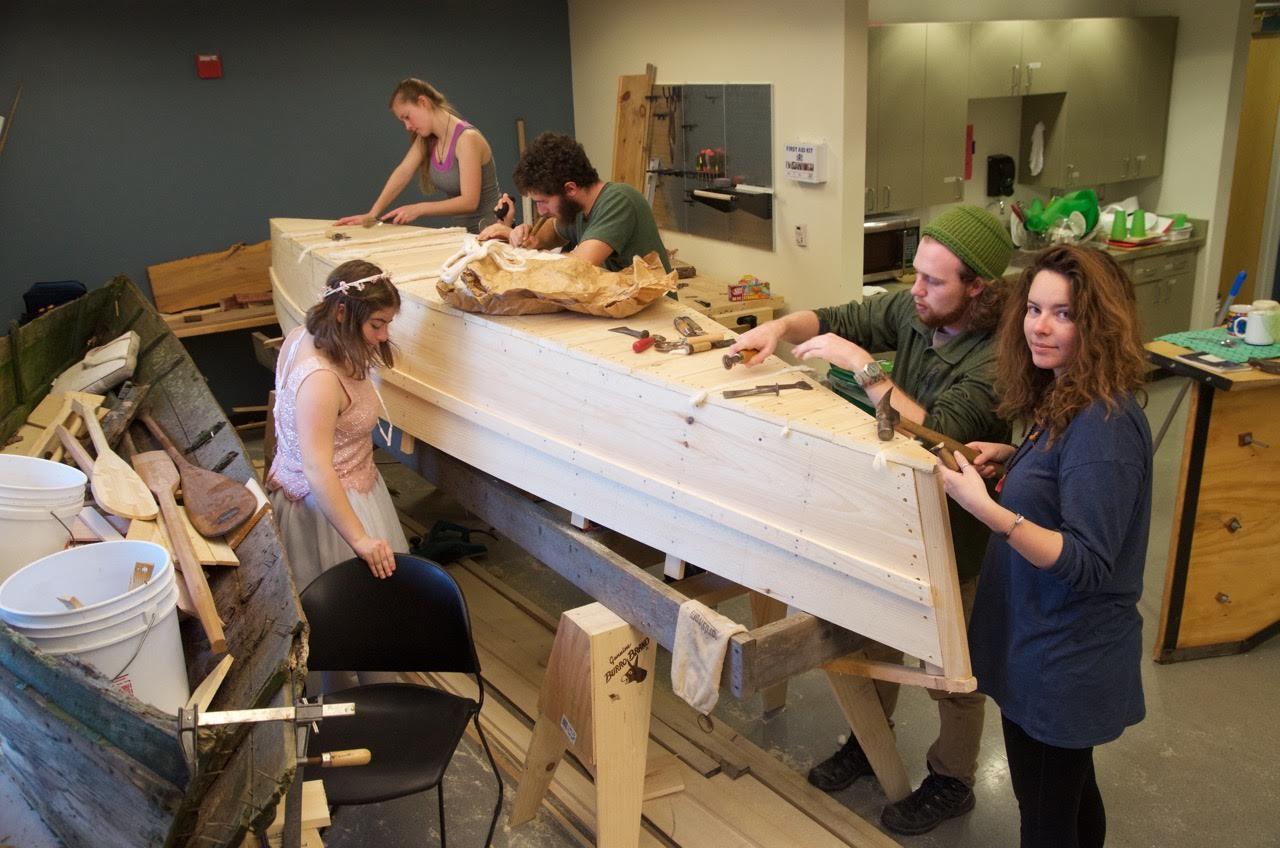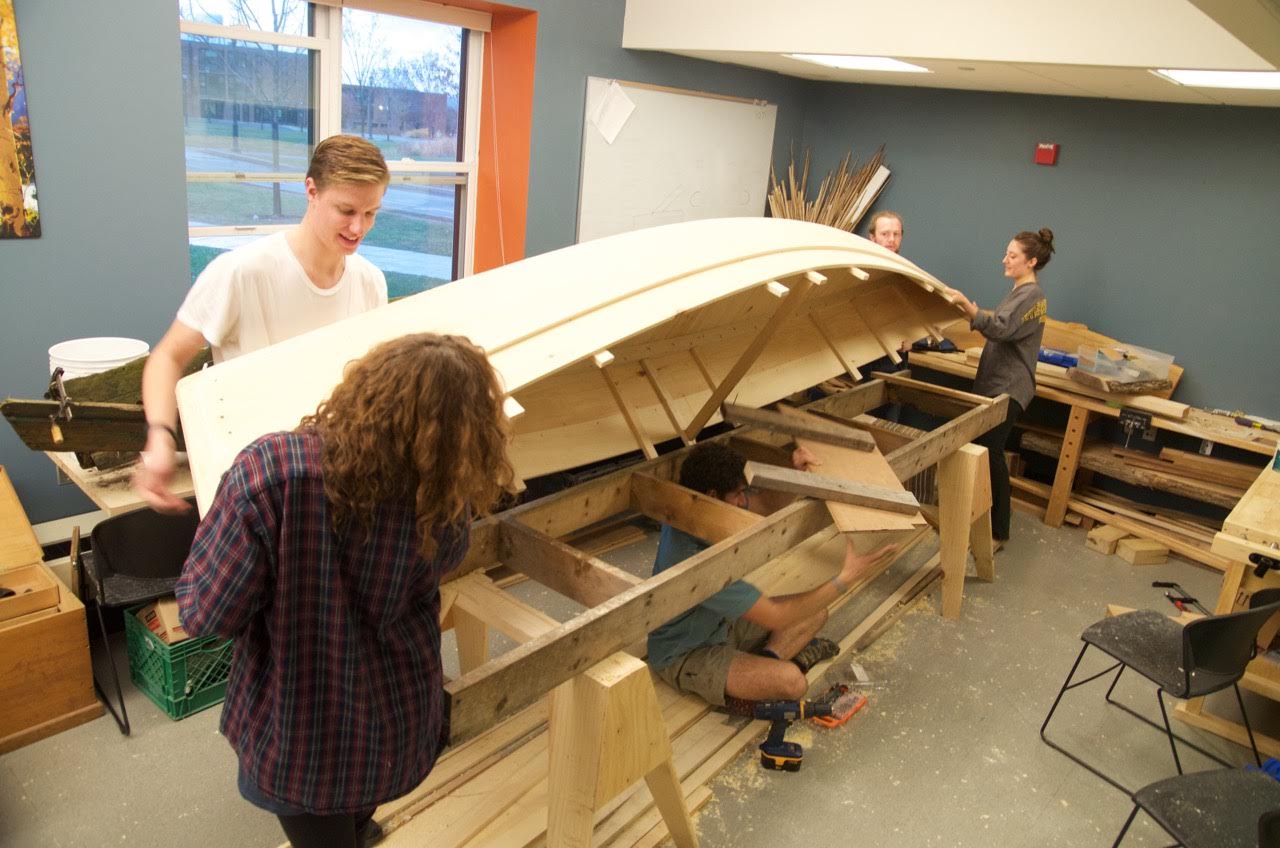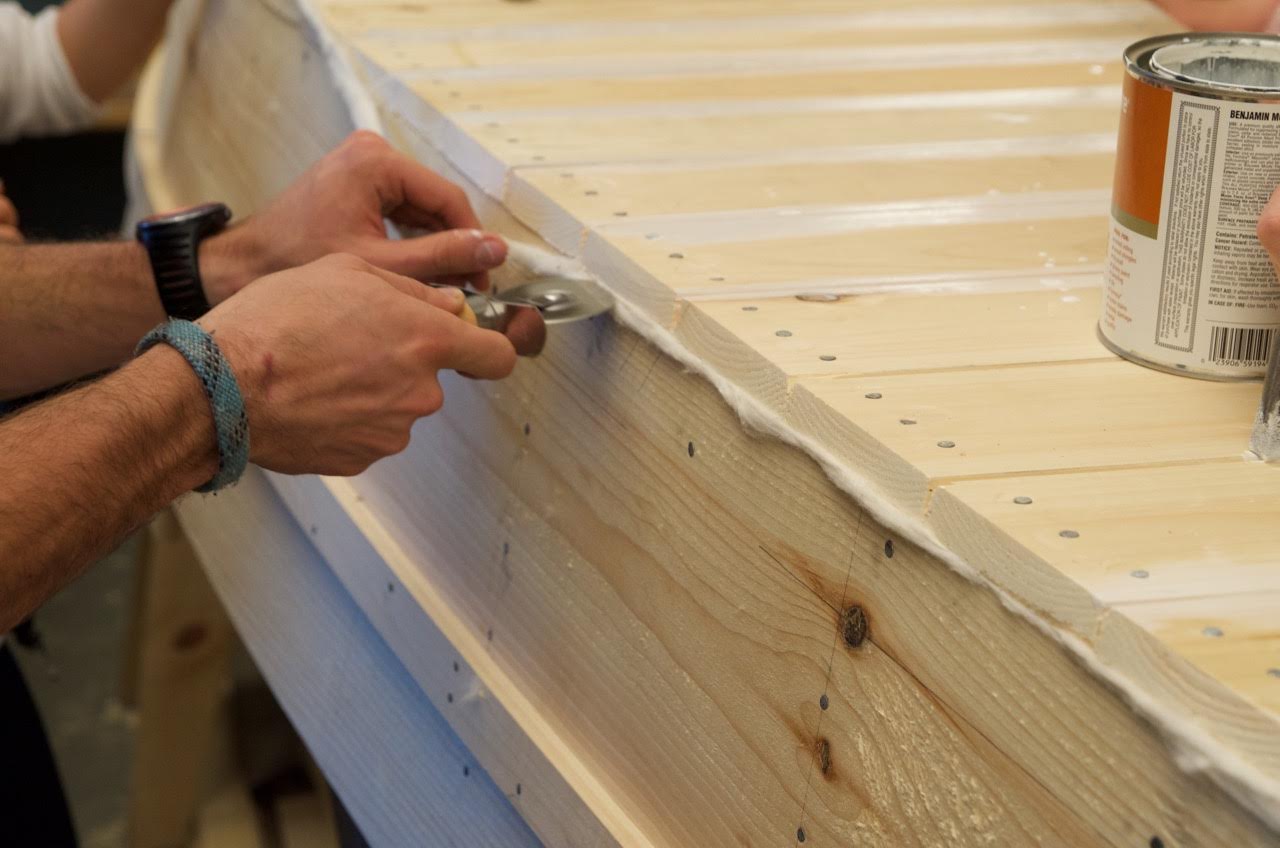Auer skiff — University of Vermont, 2015
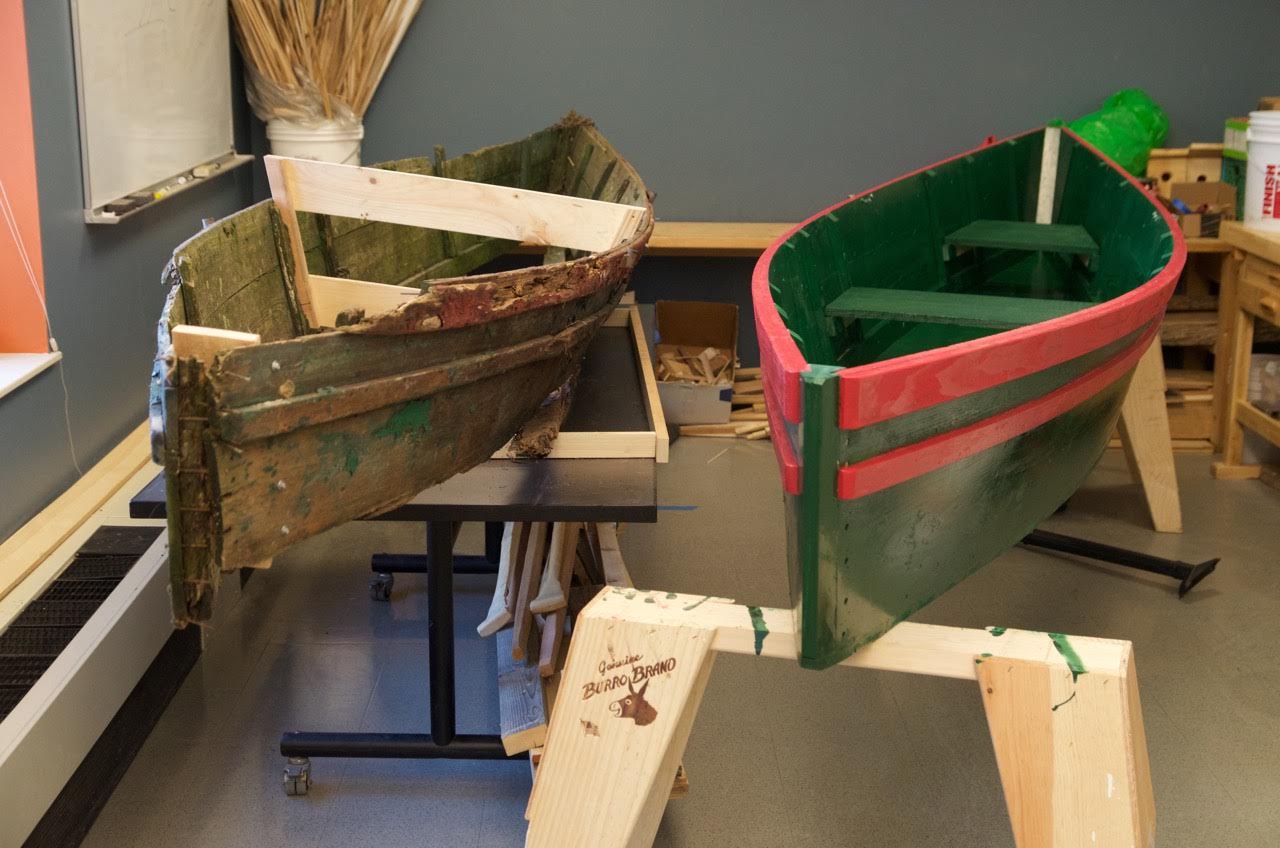
As part of a seminar in environmental studies sponsored by Green House, the environmental dormitory of the University of Vermont, I led a small class of students in the research, documentation and construction of a traditional Lake Champlain skiff. The Auer Family Boat House has been in business for 90 years, renting boats and fishing equipment on the shores of the lake in Burlington, Vermont. Charlie and Christine Auer, the children of the founders, are now in their eighties, but they tenaciously keep the family business going.
When their parents first started the business a boat livery was its mainstay. Today the Auers rent fiberglass and aluminum boats, kayaks, and canoes, but their parents built the first livery boats, and luckily one example survived. Christine Auer told us her mother was the principal builder of the boats; her father had a day job and would work on them in the evenings. The boat we documented was built for Christine when she was six years old.
All that was left of the original boat were two side planks, largely intact, and the rotten remnants of some bottom planking and thwarts. The boat was obviously a very simple form: just two planks bent around a center mold and fastened at the end, the shape held by the thwarts. We would have been lost as far as accurately reconstructing the boat but amazingly, the Auer’s still had the original center mold their mother used building boats.
We brought the original boat into the classroom and were able to take measurements and, using the mold, loft the original shape. The boat was completed during the fall semester, 2015 and went on display on campus in the spring. The students completed scale, CAD drawings of the boat. They also archived their interviews with Christine.
I blogged about the project here: http://blog.douglasbrooksboatbuilding.com/2015/11/boatbuilding-at-university-of-vermonts.html
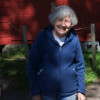
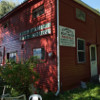

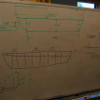
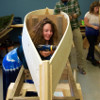
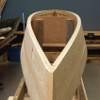
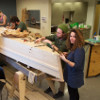
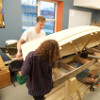
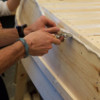
© Copyright Douglas Brooks, 2007 - 2018. All rights reserved

